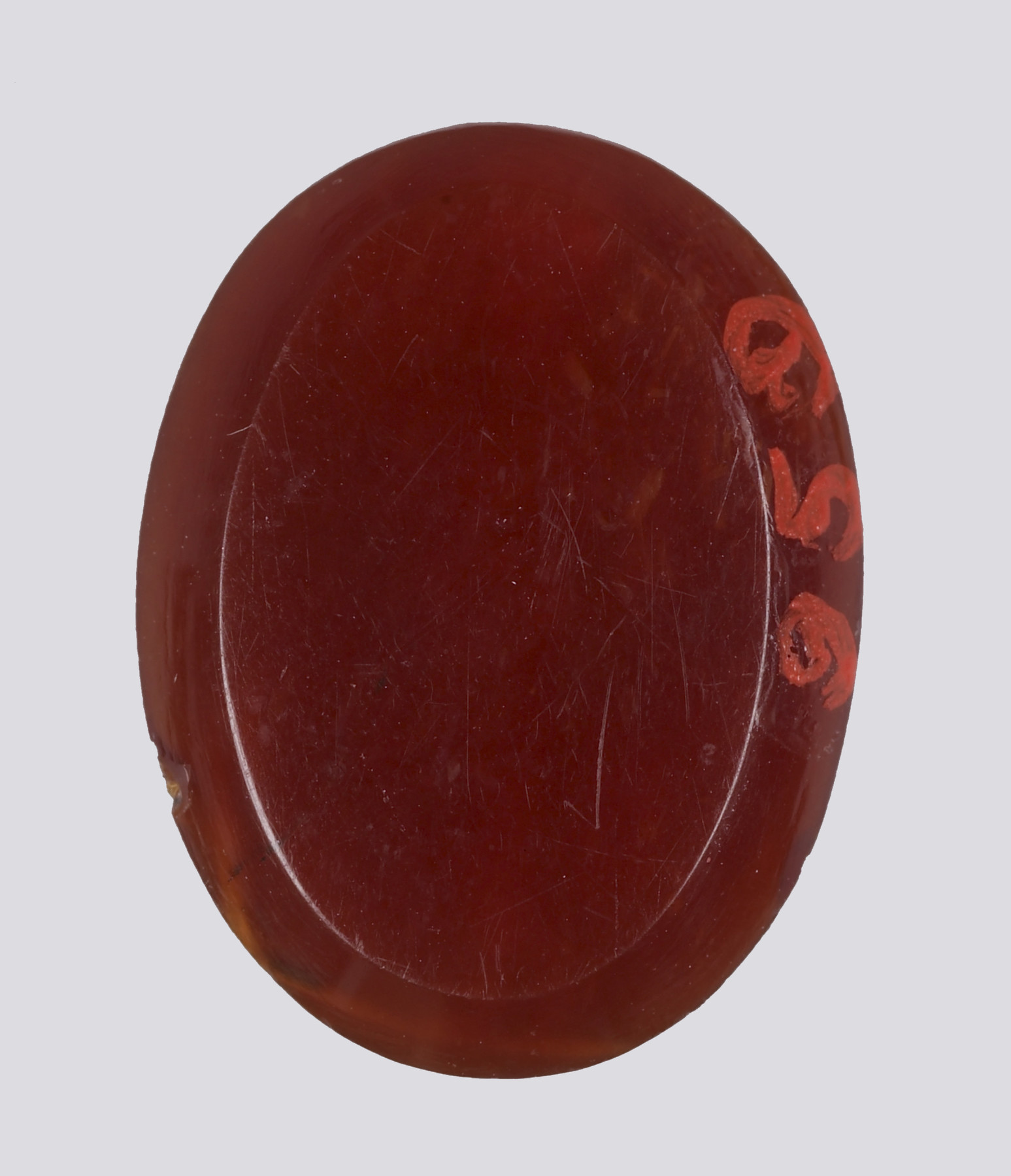Intaglio with Eros
(Roman Empire )
This intaglio shows the winged god Eros leaning on a stick he holds in his left hand. Gem engraving was a major art form in ancient Greece and Rome. Precious stones were thought to have healing and protective powers and were used as amulets and seals as well as jewelry. Engraved or incised gems, known as intaglios, were often decorated with winged creatures, such as the Sphinx and griffins. Eros was another popular subject on gemstones.
Provenance
Provenance (from the French provenir, 'to come from/forth') is the chronology of the ownership, custody, or location of a historical object. Learn more about provenance at the Walters.
Henry Walters, Baltimore, [date and mode of purchase unknown]; Sadie Jones (Mrs. Henry Walters), New York, 1931, by bequest; Joseph Brummer, Paris and New York, 1941, by purchase [Brummer inv. no. N5143a]; Walters Art Museum, 1942, by purchase.
Exhibitions
| 2009 | Things With Wings: Mythological Figures in Ancient Greek Art. Ward Museum, Salisbury. |
| 2005-2006 | Things With Wings: Mythological Figures in Ancient Greek Art. The Walters Art Museum, Baltimore. |
Geographies
Roman Empire (Place of Origin)
Measurements
H: 13/16 × W: 9/16 × D: 3/16 in. (2 × 1.5 × 0.4 cm)
Credit Line
Museum purchase [formerly part of the Walters Collection], 1942
Location in Museum
Not on view
Accession Number
In libraries, galleries, museums, and archives, an accession number is a unique identifier assigned to each object in the collection.
In libraries, galleries, museums, and archives, an accession number is a unique identifier assigned to each object in the collection.
42.959




